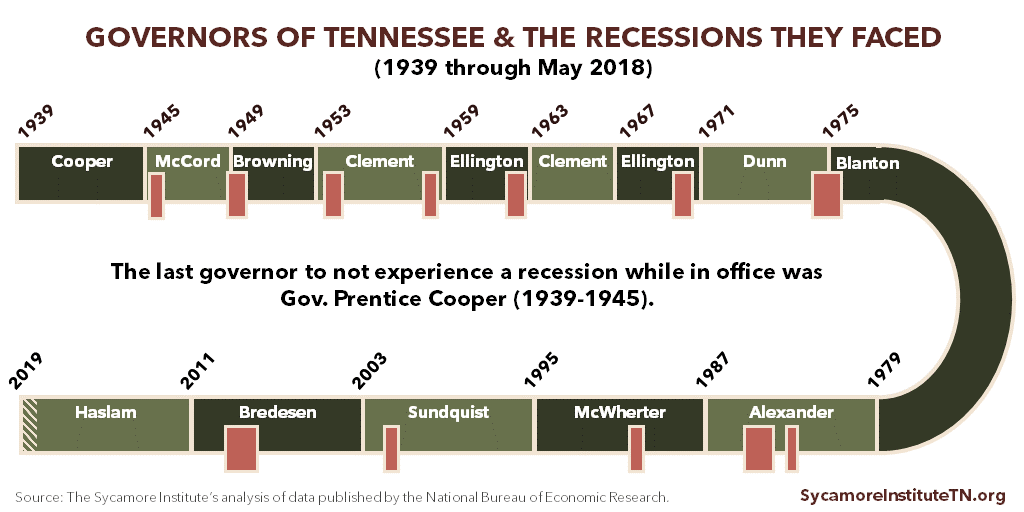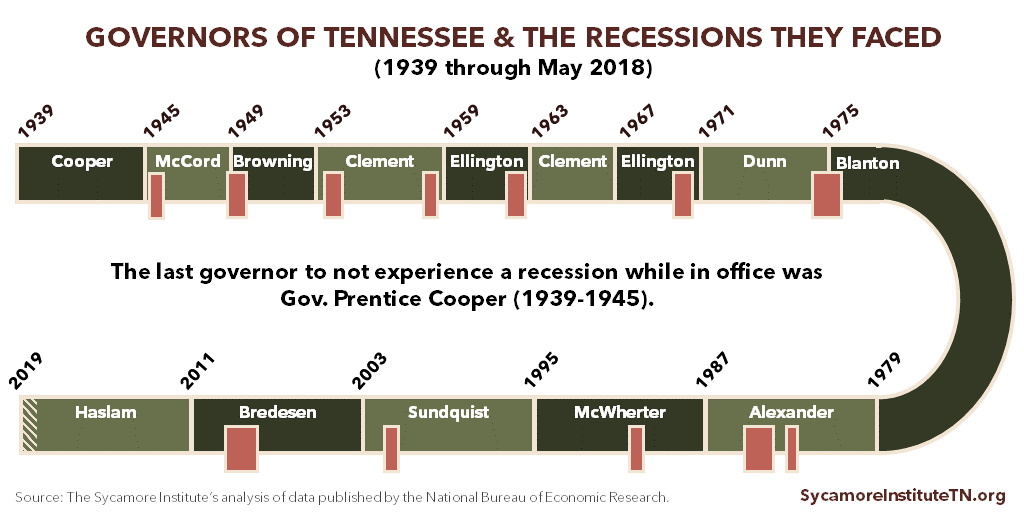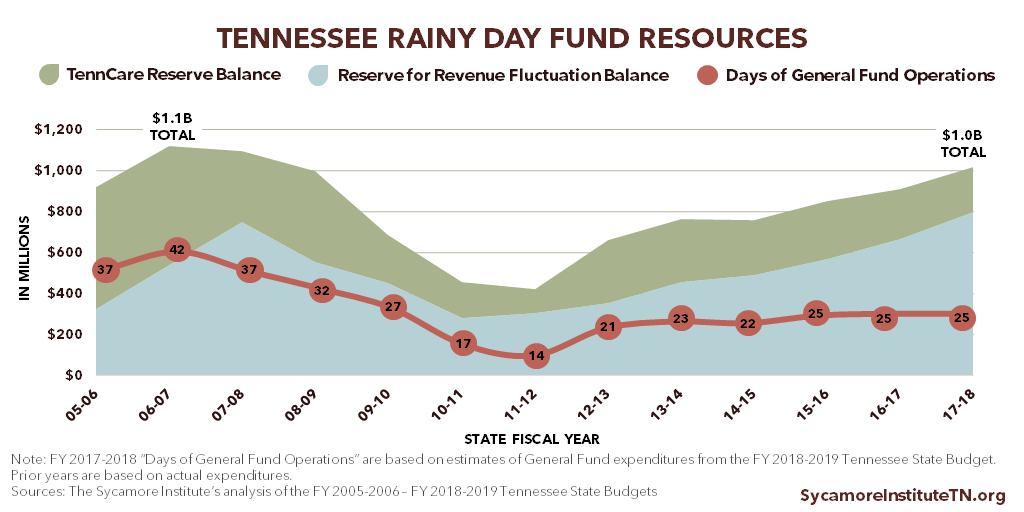
At some point, the next governor of Tennessee will probably have to craft and manage the state budget during a recession. When that recession comes, the governor’s options could prove more limited than in years past. Tough decisions lie ahead.
Key Takeaways
- Historical precedents suggest we’re overdue for a recession, which would likely boost demand for state programs and services while reducing the revenues that fund them.
- In response to revenue shortfalls, states typically cut spending, raise taxes, or tap rainy day reserves. The first 2 options may be practically and politically difficult in Tennessee, while the third offers less relief than before.
- In nominal terms, Tennessee’s main rainy day reserves have almost regained 2007-levels. In terms of buying power, they are about 40% smaller.
Historical Precedents Suggest We’re Overdue for a Recession
The current U.S. economic recovery has lasted about 3 times longer than average, according to data from the National Bureau of Economic Research. Since 1854, NBER data show the average period of economic expansion lasting just over 3 years. Measured from the low point of the Great Recession in June 2009, the current expansion has now endured for 9 years. That makes this the second longest economic recovery in the U.S. on record.
Every Tennessee governor since 1945 has experienced a recession while in office (with the potential exception of Bill Haslam). If the economy grows through January 2019, Haslam would be the first Tennessee governor not to face a recession since Prentice Cooper held the office from 1939-1945. (Figure 1) While Gov. Frank Clement did not experience a recession during his third term (1963-1967), his first 2 terms (1953-1959) saw 2 different recessions.
Figure 1
What Would A Recession Mean for Tennessee’s State Budget?
Recession readiness is one of 3 challenges for state policymakers we identified in Healthy Debate 2018, along with the opioid epidemic and funding pressures from Congress.
Recessions increase demand for state programs and services while reducing the revenues that fund them. When the economy shrinks and unemployment rises, state revenues drop even as more people tend to enroll in programs like SNAP and TennCare (the state’s largest budget item).
States can respond to revenue shortfalls by reducing spending, increasing taxes, and/or tapping rainy day reserves. However, as we explain in Healthy Debate 2018:
- The $2 billion in recurring budget reductions since FY 2007-2008 could make identifying additional cuts more of a challenge.
- Public policy and political appetite limit Tennessee’s ability to raise new revenues.
- Tennessee has grown its rainy day reserves since the Great Recession, but the money won’t go as far. (Figure 2)
Figure 2
The State Budget Now Has About 40% Less Cushion Than in 2007
The combined balance of Tennessee’s 2 main rainy day fund resources is nearly equal to the levels in the FY 2006-2007 budget. (1) The state expects to have about $1 billion between the Reserve for Revenue Fluctuation and the TennCare Reserve by the end of this fiscal year. That’s about $100 million shy of the combined balance just before the Great Recession began and almost $600 million more than in FY 2011-2012.
Today, the state would exhaust those funds about 40% faster than before the last recession. In the FY 2006-2007 budget, the combined balances were enough to cover just under 42 days of General Fund operations. In FY 2017-2018, the combined balances would cover just over 25 days of General Fund operations. (Figure 2)
Related Work by The Sycamore Institute
Healthy Debate 2018: Challenges on the Horizon
(January 5, 2018) This section of Healthy Debate 2018, a primer on health and budget policy in Tennessee, explores several challenges that Tennessee policymakers may need to consider in the months and years ahead.
Tennessee State Budget Primer
(updated November 2017) A comprehensive overview of the state budget process.
References
Click to Open/Close
- The Sycamore Institute‘s analysis of Tennessee State Budgets from FY 2007-2008 to FY 2018-2019. [Online] Cited: May 23, 2018. Accessed via: https://www.tn.gov/finance/fa/fa-budget-information/fa-budget-archive.html.
*This post was updated on May 24, 2018 to display the most current data for FY 2016-2017 in Figure 2.



















